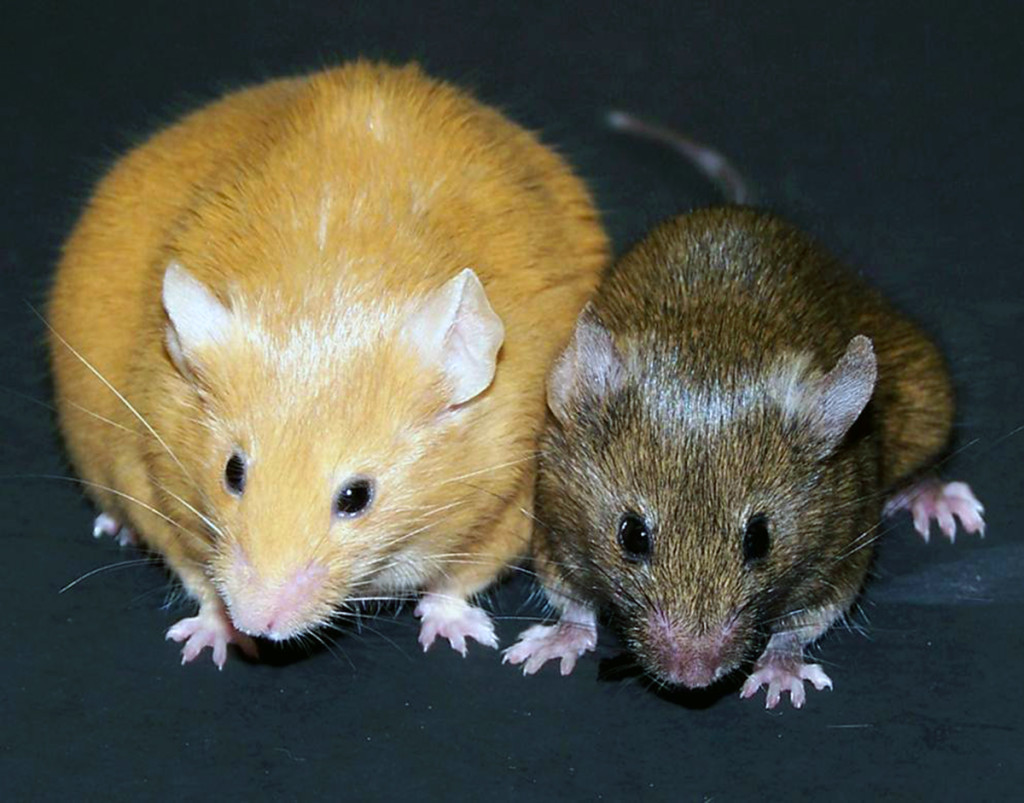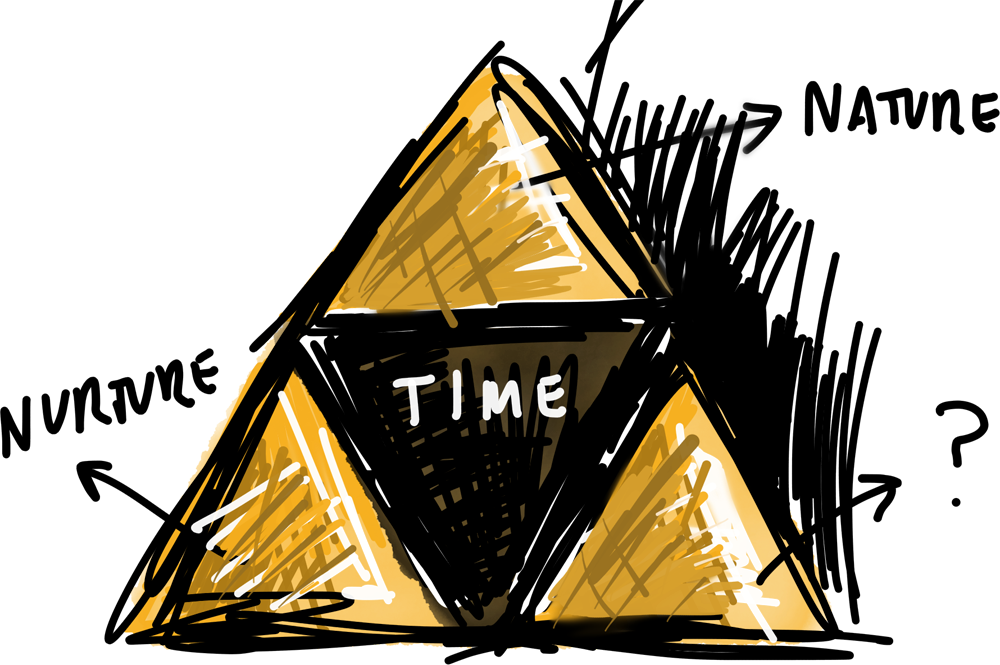This is a story about the “environment” hunk of epigenetics. It changes everything. Food becomes more than a number of calories. Training becomes more than sets and reps. Everything becomes <more>. It’s the beginning of sight beyond sight. This story starts with people eating tulip bulbs to survive. The year is 1945. The Nazi’s blockaded food [...]

This is a story about the “environment” hunk of epigenetics. It changes everything. Food becomes more than a number of calories. Training becomes more than sets and reps.
Everything becomes <more>.
It’s the beginning of sight beyond sight.
This story starts with people eating tulip bulbs to survive.
The year is 1945. The Nazi’s blockaded food delivery to the Netherlands. Combined with the brutal winter, food was scarce for the Dutch.
Some people walked ten kilometer to trade their valuables for food…
…that is, if you want to call tulip bulbs “food.”
Oh, what’s that? You’re complaining about eating freshly cooked vegetables? Loaded with spices and seasoning? Hot sauce? Mustard? Cheese?
Go outside, pick some flowers, and then plate them. Put it next to whatever else you’re trying to eat that “doesn’t taste good.” Compare.
#perspective
…I say as I complain about my Internet connection being shady in my hotel.
#ihatemyselfsometimes
…I say to remind myself I’m a steaming pile of human flesh equipped with all sorts of cognitive biases.
A lot of people of the Netherlands died of during what’s now known as the Hongerwinter (Hunger Winter). If I were a betting man, and if I had the chance to bet on such a terrible thing, I would have bet pregnant women to be among those on the survival chopping block. Not only do they have to support themselves nutritionally, but they also have to support a second life inside of them.
But some pregnant women survived.
The babies of said pregnant women were studied years down the line by scientists. They found some interesting links between the Hongerwinter and health.
If you were a third trimester fetus during the heart of the Hongerwinter, you had increased odds of suffering from type II diabetes and other dysfunctions associated with metabolic syndrome.
Wait, wait…what? Something happening to you AS A FETUS increases the likelihood of obesity later in life?
That’s gotta’ be something mom or pop gave you, right? Something…genetic…right?
Ho, ho ho!
Let’s move away from genetic determinism for a second, mmmkkkkay?

Turns out, as a fetus, you’re asking questions about the world you’re about to pop into. (Such an inquisitive little fetus, you were.) During the third trimester, one of the questions you’re asking is: “What’s the deal with nutrients and energy out there?”
If Mom is starving, then you’re starving. And the INFORMATION packed within a starvation ENVIRONMENT = there’s not a lot of nutrients and energy out there.
The smart ‘lil fetus version of yourself takes this information to heart. Not a lot of nutrients and energy out there? Then I have to get reallllllyyy efficient with what comes my way. And you develop what’s known as a thrifty metabolism: you extract and store as much energy replenishing goodness as you possibly can from food.
At least, that’s the conclusion the scientists came to.
It’s like growing up poor. Don’t have a lot of money coming your way? You learn to be frugal. You learn how to get the job done by spending less. You learn to save as much as possible.
When you adopt this behavior and live the poor life, all is well. You don’t have a lot of money, you don’t spend a lot of money.
The unique part of the Hongerwinter, and what allowed for the conclusion: babies grew up poor, but didn’t stay poor.
Let’s take the conclusion and, uhhh, conclude some more things…
ON ENVIRONMENT –
The Hongerwinter story is epigenetics 101. Information from the environment changes how genes expresses themselves. Turns out, you can make mice change, too. Below are two genetically identical agouti mice.

Change something or other with an augoti mother mouse’s feeding when she is carrying a baby and you can end up with two completely different looking mice…even though they are genetically identical. A gene that makes the mice yellow and plump gets shut off pending how the mother eats.
ON INFORMATION –
When I told you about the secret, I mentioned INFORMATION. I put INFORMATION in all caps because, apparently, people are more prone to read things in all caps. (Although, I should let people know, there’s a good chance the things in caps won’t make sense unless you also read the things in lowercase.)
I harp on INFORMATION to get away from the robotic and mechanistic thinking most of us (including myself) have about the human body.
I’LL JUST, LIKE, STARVE MYSELF, LIKE, BECAUSE I WANT TO, LIKE, LOSE WEIGHT, LIKE, YAKNOW? I NEED 2000 CALORIES TO FUNCTION. SO I’LL JUST, LIKE, GIVE MY BODY 1000 AND THEN I’LL BE SKINNY IN, LIKE, NO TIME!
From a mechanical standpoint, a numbers standpoint, a math standpoint, it makes sense. You need 2000 calories, you give yourself 1000 calories, things shake out and all ends well.
But food is more than a number. Don’t get me wrong — food has thermodynamic implications. But it also has informational implications. Most of the constructs we use to understand what’s going on inside of our body or to represent the load we place on our body (sets, reps, calories) often overlook what our body will do with the information it extracts.
When you have $1,000,000 in your bank account, it’s more than a number. You’ll go about life differently than if you had $10 in your bank account, even though, in both situations, you’re in a surplus.
There’s information attached to each.
With $1,000,000…I’m doing great! I have a lot of money! I’m stress free! I can spend money and not worry!
With $10…Things are dicey. Be careful with spending. Tighten the budget. Turn down the heating and air conditioning.
(This is probably a good time to talk nonlinearity, but I never do things right the first time around. I have this bundle of joy saved for later.)
ON SMARTS –
If you’re used to having $100,000 in your bank account and you’re used to making $2000 every week, what happens when you lose your job, make $0 every week, and then only have $10 left in your bank account?
Will you go on living the same lifestyle?
You want to survive, don’t you?
Sell the house. Liquidate stuff. Stop spending. Become frugal.
Likewise, your body makes changes because it’s motivated by biological fitness, not whatever slop Jane Fonda or whatever crap Jillian Michaels or whatever sludge the P90X folks are alien transmuting into your brain as you watch their awful TV products.
If you suddenly lose your income you’re left with a daunting reality: if I continue to live the same way I used to live, then I’ll be absolutely broke…and quick. So, uhh, let’s make some adjustments. Let’s cancel the premium cable package. Let’s think about eating in more often…
The Hongerwinter babies weren’t thinking about their prospects of being ripped and muscular because neither represent biological fitness…unless, of course, your environment demands those things from you.
(P.S. The Hongerwinter babies WERE incredibly lean. Before you read the next sentence, know this is a little disturbing. Here is a picture of a baby from the Hongerwinter.)
ON THE TETRAFORCE –
The Hongerwinter is epigenetics 101. Said that already. There are three types of lettuce in the epigenetic salad. Said that already, too.
But I say there’s actually FOUR pieces. (Haven’t said this yet though.) In the middle of the triforce, where there is usually a void, put time inside. The triforce becomes a tetraforce. Nature, nurture, randomness, time.

Yes, you can get a sun tan. No, you probably won’t become your maximal sun tan self after spending one hour in the sun. Just like you probably won’t become hardcore Rain Forest Man or Desert Man by spending only an hour in each environment.
ON DEPRESSING STUFF –
According to the Hongerwinter, you’ve been trying to learn how to best live in the world before you even knew what time was. With every passing day, you’re digesting information.
The longer you’ve fed yourself information, the further convinced you are that the information is serious business. And the more serious business it becomes, the more serious it becomes to undo.
- Sit with bad posture for a day? You’ll be alright.
- Sit with bad posture for ten years? Then you have a harder road ahead to undo the adaptations that have been done.
Struggling with a handstand? Think about how long your body has adapted to a lifestyle where the hands AREN’T weight bearing structures. Think about all of the small muscles in your wrist and hand that aren’t used to balancing the entirety of your bodyweight. Think about a babies first steps. How wobbly are they? Do they ever fall? How OFTEN do they try to walk?
ON THE HOOK –
The tetraforce has the potential to depress a man. Like me. I’m depressed. I didn’t start training the handstand until I was 26 years old, which is probably earlier than some even. I didn’t start caring about what I put in my body until I was 18. Again, probably early compared to some.
I want off the hook. I can’t compete with those that entered into gymnastics when they were two seconds old.
But I’m not letting you (or myself) off the hook.
There are people that let news like this thwomp them into the ground. They hang their head. They walk into the shadows. Never seen again.
But there are other people that are able to keep their head high. People that are able to see the GOOD in all of this. People that are able to digest everything I’ve talked about thus far and use it to propel themselves forward.
Want to be one of those people?
Then make sure you check out the next letter.